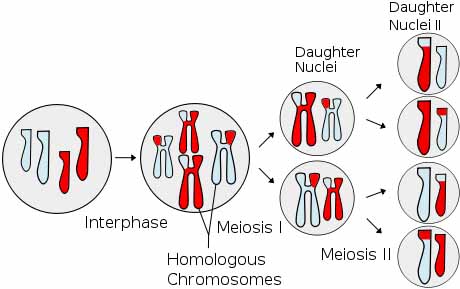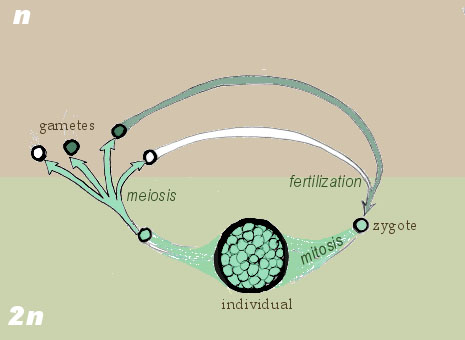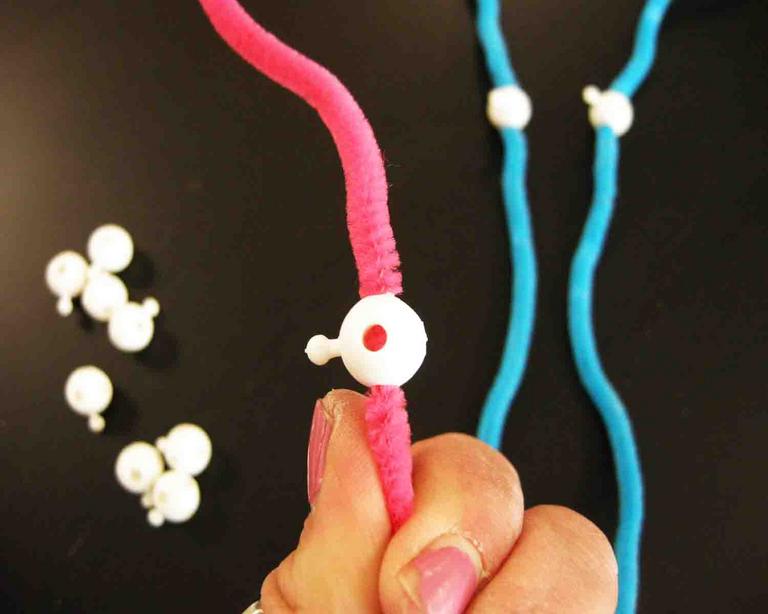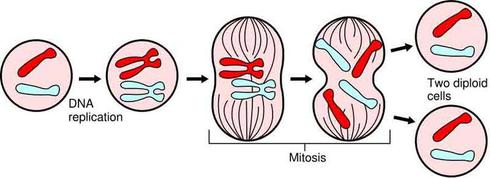 | ||||
What Is Meiosis?
CLASS NOTES from Science Prof Online
Mitosis and meiosis are two types of cell division. Mitosis is cell division that results in the duplication of cells; daughter cells that are exact copies of the parent cell, with the same number of chromosomes.
Article Summary: Meiosis, a type of cell division, results in production of gametes (eggs & sperm). These genetically unique sex cells combine at fertilization to form one-of-a-kind offspring.
Meiotic Cell Division & Sexual Reproduction
Every somatic cell in your body has 46 chromosomes. You received a set of 23 from your mother’s egg and a matching set of 23 via your father’s sperm, and now these chromosomes are the genetic material inside nearly every cell of your body.
Gametes have half the number of chromosomes as do somatic cells of the body, so are considered haploid (n). The merging of sperm and egg at fertilization brings the chromosome count back to the 2n diploid number necessary for a zygote to have complete genetic information; 2 sets of genetic instructions in 23 pairs of chromosomes.
Ploidy – Diploid
& Haploid
Most of the cells in our bodies are somatic cells and have a diplod (2n) chromosome number, meaning that most chromosomes come in pairs called homologues (only the sex chromosomes, X and Y are not homologous).
 | ||||||
SPO VIRTUAL CLASSROOMS
Meiosis is Sex Cell (Gamete) Formation
In sexually reproducing organisms, some cells are able to divide by another method called meiosis. This type of cell division results in the production of gametes (eggs or sperm).
Meiosis is more complex than mitosis, involving two divisions of the genetic material. So sperm and eggs end up with half the number of chromosomes as the progenitor cell that they arose from. Meiosis takes place in specialized reproductive tissue called the gonads. Ovaries are the female gonads and testes are the male gonads.
In mitosis, the genetic material duplicates and then divides, so that each new cell has the same genetic instructions as the parent cell did. This type of cell division allows for population growth in asexually reproducing creatures, and, in multicellular organisms, is responsible for replacement of old cells, tissue repair, growth and development.
Page last updated: 10/2015
You have free access to a large collection of materials used in a college-level introductory Cell Biology Course. The Virtual Cell Biology Classroom provides a wide range of free educational resources including Power Point Lectures, Study Guides, Review Questions and Practice Test Questions.
The SPO website is best viewed in Microsoft Explorer, Google Chrome or Apple Safari.
You have FREE access to a large collection of materials used in a college-level introductory biology course. The Virtual Biology Classroom provides a wide range of free educational resources including PowerPoint Lectures, Study Guides, Review Questions & Practice Test Questions.
See Page 2 for details on the steps of meiosis!






